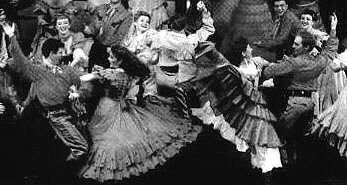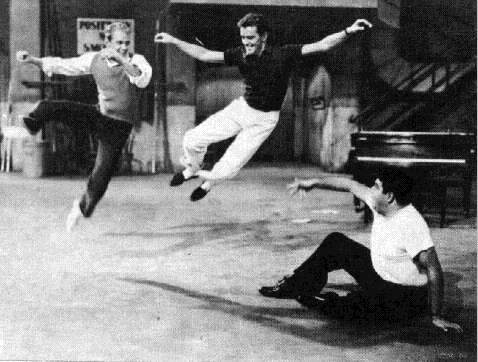|
Robert Alton Robert Alton may well have been the most prolific dance director on the Broadway and Hollywood scene during the 1930'3, 1940's, and 1950's with such shows to his credit as ANYTHING GOES, PAL JOEY, and ME AND JULIET. The characteristic Alton mode of show dancing used tap dance as a stylistic base onto which elements of ballroom, ballet, folk, or ethnic dance could be grafted. So entrenched did this image of show dancing become that the scholar Cecil Smith identified Alton as "the truest and best representative in our time of the historic qualities of American popular theatre dancing."
George Balanchine, who began his carreer with
impeccable training at the Russian Imperial Ballet School in St. Petersburg,
requested that his program credit for ON YOUR TOES (1936) read "choreographed
by..." rather than the customary "dances by..." So did George Balanchine
fire the first salvo in a revolution that would change forever the nature,
scope and function of American show dancing.
Agnes De Mille revolutionized show dance in 1943
with her contribution to OKLAHOMA. Her choreography functioned in so substantial
and valid a way as to secure for the choreographer the status of coequal
to playwright, composer, and lyricist in the making of a musical show.
Singer, Dancer, Actor, Choreographer, Gower Champion
was born on June 22, 1921 in Geneva, Illinois. He started dancing at an early
age and in 1941 entered the Coast Guard for wartime service that included
USO shows. When he left active duty, he teamed up with Marjorie Belcher,
they were married in 1947. Some of the films they appeared in were "Mr. Music",
"Showboat", "Lovely To Look At", and "Jupiter’s Darling". On television
they appeared on the "The Bell Telephone Hour", "The Marge and Gower Champion
Show" and the "Admiral Broadway Review". He directed such movie musical
blockbusters as "Hello Dolly" and "Guys and Dolls".
Jerome Robbins is world renowned for his work
as a choreographer of ballets as well as his work as a director and choreographer
in theater, movies and television. Although he began as a modern dancer,
his start on Broadway was as a chorus dancer before joining the corps de
ballet of American Ballet Theatre in 1939, where he went on to dance principal
roles. |

